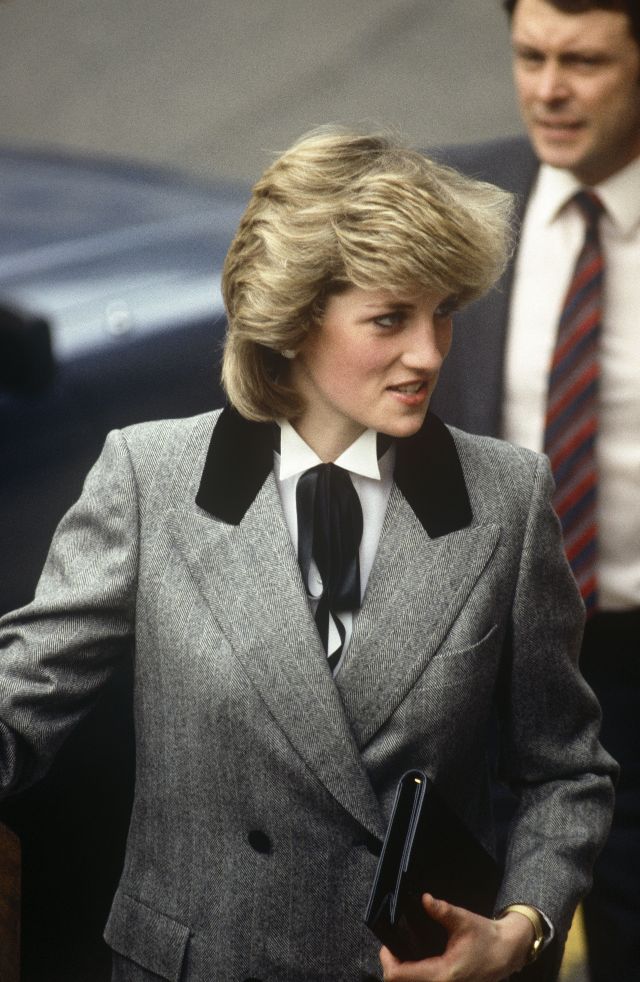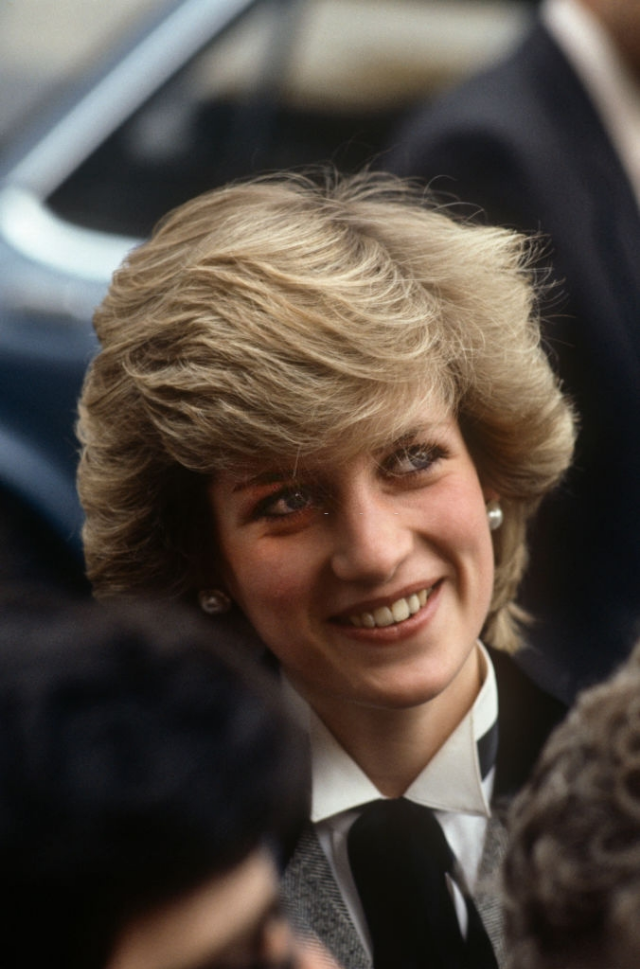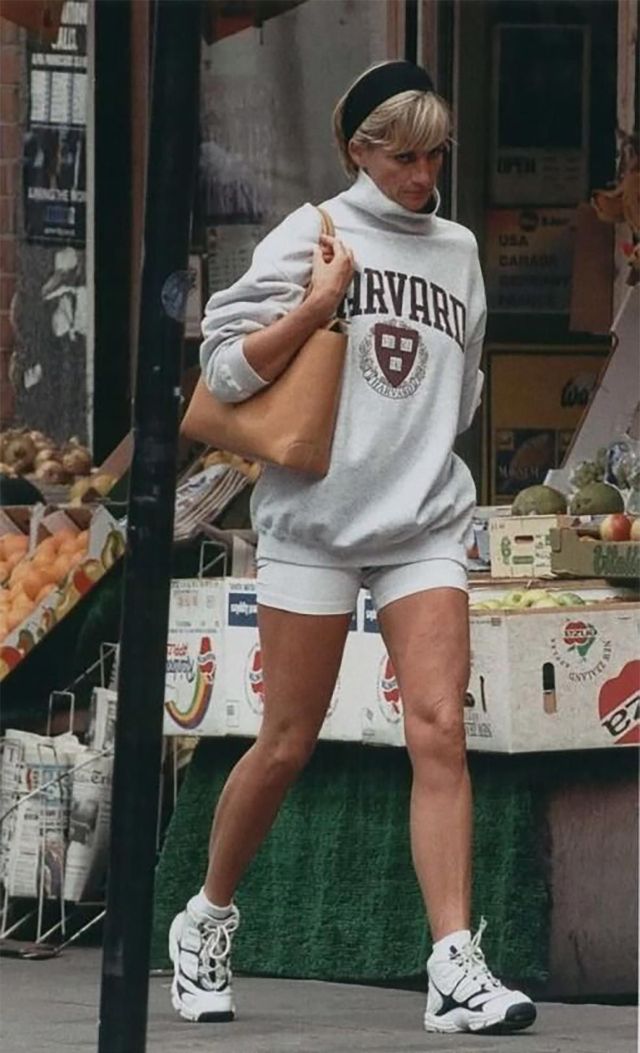Diana’s activism and glamour made her an international icon and earned her enduring popularity as well as unprecedented public scrutiny, exacerbated by her tumultuous private life. Diana (born Diana Frances Spencer) was born at Park House in 1961, the home that her parents rented on Queen Elizabeth II’s estate at Sandringham and where Diana’s childhood playmates were the queen’s younger sons, Prince Andrew and Prince Edward. She was the third child and youngest daughter of Edward John Spencer, Viscount Althorp, heir to the 7th Earl Spencer, and his first wife, Frances Ruth Burke Roche (daughter of the 4th Baron Fermoy). Her parents’ troubled marriage ended in divorce when Diana was a child, and she, along with her brother and two sisters, remained with her father. She became Lady Diana Spencer when her father succeeded to the earldom in 1975. Diana first met the Prince of Wales (King Charles III), Elizabeth II’s eldest son and heir apparent, when she was 16 in November 1977. He was then 29 and dating her older sister, Sarah. Charles and Diana were guests at a country weekend during the summer of 1980 when she watched him play polo and he took a serious interest in her as a potential bride. The relationship progressed when he invited her aboard the royal yacht Britannia for a sailing weekend to Cowes. This was followed by an invitation to Balmoral Castle (the royal family’s Scottish residence) to meet his family one weekend in November 1980. She was well received by the Queen, the Queen Mother and the Duke of Edinburgh. Charles subsequently courted Diana in London. On February 24, 1981, their engagement was announced, and her beauty and shy demeanour—which earned her the nickname “Shy Di”—made her an instant sensation with the media and the public. The couple married in St. Paul’s Cathedral on July 29, 1981, in a globally televised ceremony watched by an audience numbering in the hundreds of millions. Their first child, Prince William Arthur Philip Louis of Wales, was born on June 21, 1982, and their second, Prince Henry (“Harry”) Charles Albert David, on September 15, 1984. “Princess Di” rapidly evolved into an icon of grace, elegance, and glamour. Exuding natural charm and charisma, she used her celebrity status to aid numerous charitable causes, and her changing hairstyles and wardrobe made her a fashion trendsetter. Behind the scenes, however, marital difficulties between the princess and prince were growing. Diana struggled with severe postnatal depression, low self-esteem, eating disorders, and the mounting strain of being constantly pursued by both the official media royal-watchers and the tabloid press, particularly the paparazzi. The marital breakdown became increasingly apparent amid mutual recriminations, tell-all biographies, and admissions of infidelity on both sides, and the couple formally separated in 1992. Diana presented her side in Andrew Morton’s controversial book Diana: Her True Story (1992) and in an unusually candid television interview in 1995. After prolonged negotiations that left Diana with a substantial financial settlement but without the title Her Royal Highness, the couple’s divorce became final on August 28, 1996. She was celebrated in the media for her unconventional approach to charity work. Her patronages initially centered on children and the elderly, but she later became known for her involvement in two particular campaigns: one involved the social attitudes towards and the acceptance of AIDS patients, and the other for the removal of landmines, promoted through the International Red Cross. She also raised awareness and advocated for ways to help people affected by cancer and mental illness. To ensure that William and Harry had “an understanding of people’s emotions, their insecurities, people’s distress, and their hopes and dreams,” Diana brought her sons with her to hospitals, homeless shelters, and orphanages. To acquaint them with the world outside royal privilege, she took them to fast food restaurants and on public transportation. Her compassion, personal warmth, humility, and accessibility earned her the sobriquet “the People’s Princess.” Long one of the most-photographed women in the world, Diana’s unprecedented popularity both in Britain and abroad continued after her divorce. Although she used that celebrity to great effect in promoting her charitable work, the media (in particular the paparazzi) were often intrusive. It was while attempting to evade pursuing journalists that Diana was killed, along with her companion, Dodi Fayed, and their driver, Henri Paul, in an automobile accident in a tunnel under the streets of Paris in 1997 Though the photographers were initially blamed for causing the accident, a French judge in 1999 cleared them of any wrongdoing, instead faulting Paul, who was found to have had a blood alcohol level over the legal limit at the time of the crash and to have taken prescription drugs incompatible with alcohol. In 2006 a Scotland Yard inquiry into the incident also concluded that the driver was at fault. In April 2008, however, a British inquest jury ruled both the driver and the paparazzi guilty of unlawful killing through grossly negligent driving, though it found no evidence of a conspiracy to kill Diana or Fayed, an accusation long made by Fayed’s father. Her death produced unprecedented expressions of public mourning, testifying to her enormous hold on the British national psyche. The royal family, apparently caught off guard by the extraordinary outpouring of grief and by criticism of their emotional reticence, broke with tradition in arranging the internationally televised royal funeral. The image of Prince William, then age 15, and Prince Harry, then age 12, walking solemnly with their father behind Diana’s casket in her funeral cortege became iconic. At Diana’s funeral Sir Elton John performed a version of his classic song “Candle in the Wind” (originally written about actress Marilyn Monroe) with lyrics that had been revised by his songwriting partner, Bernie Taupin, to reflect on the life and death of Diana, including “Goodbye England’s rose; May you ever grow in our hearts. /You were the grace that placed yourself; Where lives were torn apart”. Diana was a fashion icon whose style was emulated by women around the world. Iain Hollingshead of The Telegraph wrote: “[Diana] had an ability to sell clothes just by looking at them.” An early example of the effect occurred during her courtship with Charles in 1980 when sales of Hunter Wellington boots skyrocketed after she was pictured wearing a pair on the Balmoral estate. According to designers and people who worked with Diana, she used fashion and style to endorse her charitable causes, express herself and communicate Diana remains a prominent figure for her fashion style, impacting recent cultural and style trends. The princess’s fashion combined classically royal expectations with contemporary fashion trends in Britain. While on diplomatic trips, her clothes and attire were chosen to match the destination countries’ costumes, and while off-duty she used to wear loose jackets and jumpers. “She was always very thoughtful about how her clothes would be interpreted, it was something that really mattered to her”, according to Anna Harvey, a former British Vogue editor and Diana’s fashion mentor. Her fashion sense originally incorporated decorous and romantic elements, with pastel shades and lush gowns. Elements of her fashion rapidly became trends. She forgoed certain traditions, such as wearing gloves during engagements, and sought to create a wardrobe that helped her to connect with the public. According to Donatella Versace who worked closely with Diana alongside her brother, Diana’s interest and sense of curiosity about fashion grew significantly after her marital separation. Her style subsequently grew bolder and more businesslike, featuring structured skirt suits, sculptural gowns, and neutral tones designed to reflect attention toward her charity work. Catherine Walker was among Diana’s favourite designers with whom she worked to create her “royal uniform”. Among her favoured designers were Versace, Armani, Chanel, Dior, Gucci and Clarks. Her iconic outfits include a cocktail dress by Christina Stambolian, commonly known as the “Revenge dress”, which she wore after Charles’s admission of adultery, as well as an evening gown by Victor Edelstein that she wore to a reception at the White House and later became known as the “Travolta dress”. Copies of Diana’s British Vogue-featured pink chiffon blouse by David and Elizabeth Emanuel, which appeared on the magazine’s cover on her engagement announcement day, sold in the millions. She appeared on two more British Vogue covers during her lifetime and was featured on its October 1997 issue posthumously. She was also featured in the cover story for the July 1997 issue of Vanity Fair. Diana did her own makeup for events, and was accompanied by a hairstylist for public appearances. In the 1990s, Diana was frequently photographed clutching distinctive handbags manufactured by Gucci and Dior, which became known as the Gucci Diana and Lady Dior.
Princess Diana as a child From the 1960s
(Photo credit: Blogspot / Getty Images via ELLE Decor / Terence Donovan, National Portrait Gallery / David Levenson / Britannica / Wikimedia Commons / Flickr / Royal UK / Pinterest / Vintages). Notify me of new posts by email.
Δ Subscribe

























































